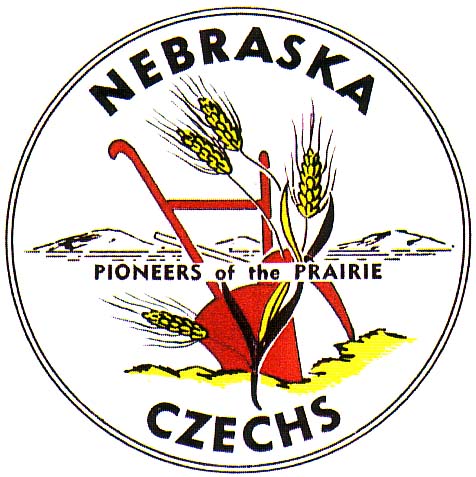
Easter

Czechs may be one of the most secular nations in Europe, but when it comes to Christian holidays such as Easter or Christmas, they are very keen to observe traditions, even if they don’t know anything about their origin. The Easter holiday has always symbolized the end of winter and the beginning of spring. It is a movable holiday, with Easter Sunday following the first full moon after the first day of spring. This year, Easter has fallen on March 23rd and 24th. But whether it comes a week earlier or a week later, the weather here in the Czech Republic usually doesn’t indicate that winter has departed. Whatever the weather, however, people associate Easter with the coming of spring. If it is cold, they at least cut branches to let them blossom in the warmth of their homes.
While pagan Slavs and Germans celebrated the beginning of spring as the awakening of nature from its winter sleep, the Christian Easter is linked to the martyrdom and resurrection of Christ. In Czech the word Velikonoce refers to “Velká noc” or great night, during which Jesus was resurrected from the dead. However, most customs and traditions preserved to these days have pre-Christian or even pagan roots. The most popular one is definitely the coloring and decorating of eggs.
Professionals in the art of egg-decorating can turn eggs into genuine works of art, decorating them with straw, wax or bobbin lace. They usually use egg shells from which the raw yolk is blown through two opposite holes poked in the top and bottom. Normal people, especially families with children, prefer to decorate hard-boiled eggs, which are less fragile. The most common method of decorating is dying the eggs with onion skins, which makes their colour deep brown. During the communist days, it was also common to use fabric dye. Nowadays, children have a vast variety of colours and stickers to choose from.
Another popular pagan tradition surviving to these days is the whipping of women and girls. The whip or “pomlázka” is braided from three or more willow rods. Pagan Slavs believed that whipping brought good luck, wealth and a rich harvest for the whole year. The strength and vitality of young twigs was supposed to be transferred onto the person whipped. I suspect that in these days, men don’t have a clue about the metaphysical meaning of this tradition; they simply enjoyed the opportunity to chase the village girls and have some fun.
Traditional whipping should be accompanied by the singing of Easter carols. Unlike Christmas carols, they are not that well-known. Caroling is also accompanied by the sound of the clapper and rattle, an activity definitely more enjoyed by children than by their parents. According to the Christian tradition, all the bells are rung on Green Thursday and then they are silenced until White Saturday. Meanwhile, their toll is replaced by the clapper and rattle. Girls and women present the carolers with eggs, the pagan symbol of life and fertility. But apart from eggs – real and chocolate ones, Easter is also associated with other foods, mainly with lamb. These days lamb is rarely eaten in the Czech Republic but it still appears on Easter tables - in the form of a cake - with eyes made of raisins or cloves and a green twig in its mouth…
By the time Easter is over, most Czechs have eaten far too much, finally understanding, perhaps, why Christians observe a lent during the weeks preceding the holiday. Despite the lack of knowledge of traditions, Easter is a time that brings families together..
While pagan Slavs and Germans celebrated the beginning of spring as the awakening of nature from its winter sleep, the Christian Easter is linked to the martyrdom and resurrection of Christ. In Czech the word Velikonoce refers to “Velká noc” or great night, during which Jesus was resurrected from the dead. However, most customs and traditions preserved to these days have pre-Christian or even pagan roots. The most popular one is definitely the coloring and decorating of eggs.
Professionals in the art of egg-decorating can turn eggs into genuine works of art, decorating them with straw, wax or bobbin lace. They usually use egg shells from which the raw yolk is blown through two opposite holes poked in the top and bottom. Normal people, especially families with children, prefer to decorate hard-boiled eggs, which are less fragile. The most common method of decorating is dying the eggs with onion skins, which makes their colour deep brown. During the communist days, it was also common to use fabric dye. Nowadays, children have a vast variety of colours and stickers to choose from.
Another popular pagan tradition surviving to these days is the whipping of women and girls. The whip or “pomlázka” is braided from three or more willow rods. Pagan Slavs believed that whipping brought good luck, wealth and a rich harvest for the whole year. The strength and vitality of young twigs was supposed to be transferred onto the person whipped. I suspect that in these days, men don’t have a clue about the metaphysical meaning of this tradition; they simply enjoyed the opportunity to chase the village girls and have some fun.
Traditional whipping should be accompanied by the singing of Easter carols. Unlike Christmas carols, they are not that well-known. Caroling is also accompanied by the sound of the clapper and rattle, an activity definitely more enjoyed by children than by their parents. According to the Christian tradition, all the bells are rung on Green Thursday and then they are silenced until White Saturday. Meanwhile, their toll is replaced by the clapper and rattle. Girls and women present the carolers with eggs, the pagan symbol of life and fertility. But apart from eggs – real and chocolate ones, Easter is also associated with other foods, mainly with lamb. These days lamb is rarely eaten in the Czech Republic but it still appears on Easter tables - in the form of a cake - with eyes made of raisins or cloves and a green twig in its mouth…
By the time Easter is over, most Czechs have eaten far too much, finally understanding, perhaps, why Christians observe a lent during the weeks preceding the holiday. Despite the lack of knowledge of traditions, Easter is a time that brings families together..
Source: 24-03-2008 | Ruth Fraňková http://www.radio.cz/en/section/special/czech-easter-traditions
For fun, here is an Easter slideshow in Czech.
Click on the image to advance to the next slide.